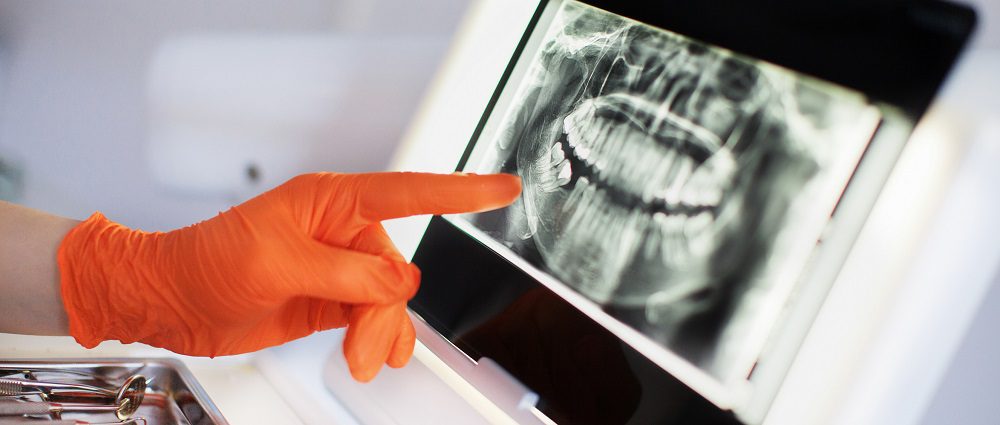Your dentist can learn a great deal about your oral health through a visual exam of your teeth and gums. So why does your dentist also recommend taking x-ray imaging of your teeth once a year? X-rays allow your dentist to view potential dental concerns in the interior of your teeth and jawbone.
According to the American Dental Association, dental x-rays are completely safe for your overall health. But you can feel more comfortable receiving this imaging when you know the advantages it can provide for your smile. Read on to find three oral health benefits you can experience when you receive a routine x-ray from your dentist.

Why Do I Need a Dental X-Ray?
Spot Stubborn Tooth Decay
You may already know you have a cavity. This early stage of tooth decay might make your teeth feel sensitive and could present with dark discoloration. A dentist can also see some cavities with a visual exam.
But cavities can also develop in between teeth or in more stubborn locations where they can stay hidden from the naked eye. A cavity in a tooth will show up on an x-ray, so dentists will ask their patients to get this routine imagery taken to complete their oral exam.
Cavities will worsen without prompt treatment from a dentist. Then the bacteria will continue eating away at your dental structure until you sustain extreme damage that might result in tooth loss. So make sure you maximize your preventative dental care with x-ray imaging.
Evaluate Tooth Pulp Health
If you sustain damage to the pulp of your tooth, your dentist cannot see this problem with the naked eye. A dental x-ray will let the dentist know if the tooth pulp has an infection, has become non-vital, or has another issue that requires dental intervention.
The x-ray can see if blood does not flow the way that it should to the tooth pulp, and the dentist can perform a tooth pulp vitality test to confirm that you have what is known as a dead tooth. You will not necessarily need urgent dental care in this case. But if you have an infected tooth pulp, the dentist might need to treat it with root canal therapy.
Monitor Tooth Growth
A dentist can also use x-ray imaging to monitor the positions and the growth of your teeth. If they see signs of overcrowding or severe misalignment, the dentist can intervene. They can refer you to an orthodontist or extract teeth to avoid serious oral health issues that can occur due to these bite problems.
The dentist can also monitor the growth of wisdom teeth this way. These extra molars can cause many issues with your smile when they start to grow into place. Your dentist can make sure they do not disrupt your smile or grow impacted.
If they do, they can schedule a wisdom teeth removal procedure to extract them before they cause problems. Crooked teeth can heighten your risk for dental damage, beyond aesthetic concerns.
